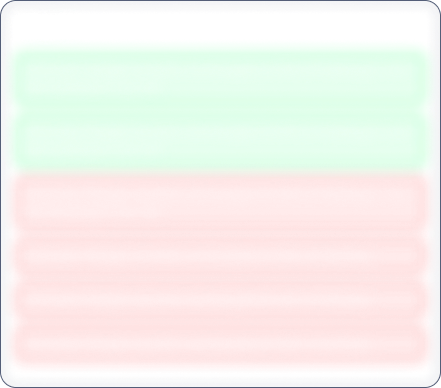Year End Sale 50% off
Unihealth Hospitals

No Data Available
Investor Sentiment
Unihealth Hospitals Share price and Fundamental Analysis
Key Metrics
Stock Returns
Stock Heatmap

No Stocks
Smart Score

Unlock Smart Score
See Detailed Analysis & Insights


Unlock Insights
See Detailed Analysis & Insights
Technicals
Returns Calculator
If you would have investedResearch Report
No Research Report
Corporate Action
Financials
Key Ratios
ROE
Avg ROE (3 Yrs) : NaN%
ROCE
Avg ROCE (3 Yrs) : NaN%
ROA
Avg ROA (3 Yrs) : NaN%
NPM
Avg NPM (3 Yrs) : NaN%
Dividend History
5 Year FactSheet
Documents

No Data Available
News
Unihealth Hospitals Management and History
Company Management


Unlock Management Data
See Detailed Analysis & Insights
Company History
Unihealth Consultancy Ltd was incorporated as Private Limited Company under the name 'Unihealth Consultancy Private Limited', Certificate of Incorporation was issued by the Registrar of Companies, Mumbai on February 26, 2010. The status of Company changed to Public Limited, and resultant, its name was changed to 'Unihealth Consultancy Limited' through fresh Certificate of Incorporation dated April 26, 2023 by the Registrar of Companies, Mumbai.
Unihealth Consultancy Limited is the Holding Company of the Group providing healthcare consultancy and management services. The Company facilitates medical value travel for patients travelling from various countries into Middle East and Africa to India for advanced medical care services. The Company is a healthcare service provider based out of Mumbai, India having operational presence in multiple countries across the African continent. The business segments include Medical Centres, Hospitals, Consultancy Services, Distribution of Pharmaceutical & Medical Consumable Products and Medical Value Travel.
In 2011, the Company established the International Patient Division in Pune. Thereafter, during the year, Unihealth Center for Cosmetic Surgery and Beauty Clinic was commissioned at Aamby Valley City. In 2012, Company ventured into the Healthcare Consultancy Services with its first project being introduced as 'Equipment Planning & Procurement Services'.
In 2013, Ethiopian Airlines Enterprises got into collaboration with Company to provide medical travel facilitation services representing as its partner. The Company entered into Mozambique in 2014 and was registered as its 100% subsidiary in UAE to provide consultancy services. In 2015, it earmarked investments and acquired Biohealth Limited to set up radiology and dialysis centers in Tanzania. Thereafter, in 2017, it commissioned UMC Victoria Hospital in Kampala by taking over the assets of the erstwhile Kadic Hospital & UMC Zhahir Hospital in Kano (Nigeria). In 2018, the state-of-art 70 bed facility was commissioned in Kampala (Uganda), opposite the existing UMC Victoria Hospital.
Under the flagship UMC Hospitals' brand, Unihealth operate a combined capacity of 200 operational hospital beds across two multi-speciality facilities i.e. UMC Victoria Hospital in Kampala, Uganda, having a bed-strength of 120 beds and UMC Zhahir Hospital in Kano, Nigeria have a bed strength of 80 beds. In addition to these, it further operate Unihealth Medical Centre' a dialysis facility, in Mwanza, Tanzania.
Presently , the Company is providing Project Management Consultancy Services to set up a 300+ bedded Health City in Undri, Pune (Maharashtra, India) for PHRC Lifespaces Organization along with a few other healthcare consultancy projects in Kenya and Angola.
The Company is proposing Public Offer of issuing Up to 42,84,000 Equity Shares through Fresh Issue.
Unihealth Hospitals Share Price
Unihealth Hospitals share price reflects investor sentiment toward the company and is impacted by various factors such as financial performance, market trends, and economic conditions. Share price is an indicator which shows the current value of the company's shares at which buyers or sellers can transact.
Unihealth Hospitals Market Cap
Market capitalization of Unihealth Hospitals indicates the total value of its outstanding shares. Marketcap is calculated by multiplying share price and outstanding shares of the company. It is a helpful metric for assessing the company's size and market Valuation. It also helps investors understand how Unihealth Hospitals is valued compared to its competitors.
Unihealth Hospitals PE Ratio
Unihealth Hospitals PE ratio helps investors understand what is the market value of each stock compared to Unihealth Hospitals 's earnings. A PE ratio higher than the average industry PE could indicate an overvaluation of the stock, whereas a lower PE compared to the average industry PE could indicate an undervaluation.
Unihealth Hospitals PEG Ratio
The PEG ratio of Unihealth Hospitals evaluates its PE ratio in relation to its growth rate. A PEG ratio of 1 indicates a fair value, a PEG ratio of less than 1 indicates undervaluation, and a PEG ratio of more than 1 indicates overvaluation.
Unihealth Hospitals ROE (Return on Equity)
Return on Equity (ROE) measures how effectively Unihealth Hospitals generates profit from shareholders' equity. A higher ROE of more than 20% indicates better financial performance in terms of profitability.
Unihealth Hospitals ROCE (Return on Capital Employed)
Return on Capital Employed (ROCE) evaluates the profitability of Unihealth Hospitals in relation to its capital employed. In simple terms, ROCE provides insight to investors as to how well the company is utilizing the capital deployed. A high ROCE of more than 20% shows that the business is making profitable use of its capital.
Unihealth Hospitals Total Debt
Total debt of Unihealth Hospitals shows how much the company owes to either banks or individual creditors. In simple terms, this is the amount the company has to repay. Total debt can be a very useful metric to show the financial health of the company. Total debt more than equity is considered to be a bad sign.
Unihealth Hospitals Debt to Equity Ratio
The Debt-to-Equity (DE) ratio of Unihealth Hospitals compares its total debt to shareholders' equity. A higher Debt to Equity ratio could indicate higher financial risk, while a lower ratio suggests that the company is managing its debt efficiently.
Unihealth Hospitals CAGR (Compound Annual Growth Rate)
CAGR shows the consistent growth rate of Unihealth Hospitals over a specific period, whether it is over a month, a year, or 10 years. It is a key metric to evaluate the company’s long-term growth potential. Main metrics for which CAGR is calculated are net sales, net profit, operating profit, and stock returns.
Unihealth Hospitals Technical Analysis
Technical analysis of Unihealth Hospitals helps investors get an insight into when they can enter or exit the stock. Key components of Unihealth Hospitals Technical Analysis include:
Support Levels (S1, S2, S3)
There are usually multiple support levels, but the main support levels for a stock are S1, S2, S3. Support levels indicate price points where stock might get support from buyers, helping the stock stop falling and rise.
Resistance Levels (R1, R2, R3)
There are usually multiple resistance levels, but the main resistance levels for a stock are R1, R2, R3. Resistance levels represent price points where Unihealth Hospitals shares often struggle to rise above due to selling pressure.
Unihealth Hospitals Dividends
Dividends refer to the portion of the company’s profits distributed to its shareholders. Dividends are typically paid out in cash and reflect Unihealth Hospitals ’s financial health and profitability.
Unihealth Hospitals Bonus Shares
Bonus shares are usually given by companies to make the stock more affordable, increase liquidity, boost investor confidence, and more.
Unihealth Hospitals Stock Split
Stock split increases the number of its outstanding shares by dividing each existing share into multiple shares. When the company offers a stock split, the face value of the stock reduces in the same proportion as the split ratio.
Unihealth Hospitals Financials
The financials of Unihealth Hospitals provide a complete view to investors about its net sales, net profit, operating profits, expenses, and overall financial health. Investors can analyze financial data to assess the company’s stability and also understand how the company has been growing financially.
Unihealth Hospitals Profit and Loss Statements
The profit and loss statement of Unihealth Hospitals highlights its net sales, net profit, total expenditure, and operating profits in the current financial year. This Profit and Loss statement is crucial for evaluating the profitability and financial stability of Unihealth Hospitals .
Unihealth Hospitals Balance Sheet
The balance sheet presents a snapshot of Unihealth Hospitals ’s assets, liabilities, and equity of shareholders, providing insights into the financials of the company.
Unihealth Hospitals Cashflow Statements
Cashflow statements track the company's cash inflows and outflows over a period. It is an essential tool for understanding how well the company manages its liquidity and finances.


